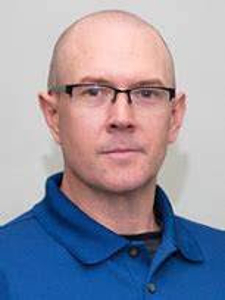OSE Seminar by Dr. John Grey of Sandia National Labs on Hierarchical self-assembly of carbon dots into high aspect ratio nanowires.
Departmental News

Posted: August 23, 2023
Date: Thursday, August 23rd, 2023
Time: 12:45 PM - 1:45 PM
Location: CHTM, Room 103
Abstract:
A new spontaneous and hierarchical self-assembly mechanism has been observed in carbon dots resulting in nanowires with high aspect ratios. Scattering-type scanning near-field optical microscopy (s-SNOM) with broadly tunable mid-IR excitation was used to interrogate details of the self-assembly process by generating nanoscopic chemical maps of local wire morphology and composition. s-SNOM images capture the evolution of wire formation and the complex interplay between different chemical constituents directing assembly over the nano- to microscopic length scales. Tautomerization of melamine surface functionalities produces supramolecular shape synthons which provides the structural basis for forming long-range and highly directional hydrogen bonding networks. This self-assembly mechanism is intrinsic and may potentially be harnessed to reproducibly fabricate functional structures on arbitrary surfaces. This work was supported by the Laboratory Directed Research and Development program at Sandia National Laboratories, a multimission laboratory managed and operated by National Technology and Engineering Solutions of Sandia, LLC, a wholly owned subsidiary of Honeywell International, Inc., for the U.S. Department of Energy’s National Nuclear Security Administration under Contract DE-NA-0003525. This written work is authored by an employee of NTESS. The employee, not NTESS, owns the right, title and interest in and to the written work and is responsible for its contents. Any subjective views or opinions that might be expressed in the written work do not necessarily represent the views of the U.S. Government. The publisher acknowledges that the U.S. Government retains a non-exclusive, paid-up, irrevocable, world-wide license to publish or reproduce the published form of this written work or allow others to do so, for U.S. Government purposes. The DOE will provide public access to results of federally sponsored research in accordance with the DOE Public Access Plan.
John K. Grey*1, Terefe G. Habteyes*,2 Eric R. Westphal,1 Kenneth M. Plackowski,1,2 Paul G. Kotula,1 Melissa L. Meyerson,1Stephanie L. White,1 Cody Corbin,1 Koushik Ghosh,*1 1 Sandia National Laboratories, 1515 Eubank Dr SE, Albuquerque, NM 87185; 2Department of Chemistry, University of New Mexico, Albuquerque, NM 87131
Biography:
John Grey received his B.S. degree in chemistry from Michigan Technological University in 1999 and Ph.D. from McGill University in 2004. He then accepted a postdoctoral position at the University of Texas at Austin with Prof. Paul Barbara under the auspices of an ACS Alternative Energy Fellowship. In 2007, he began his independent career as an assistant professor at the University of New Mexico and his research investigated exciton coupling and spin interconversion in single conjugated organic polymers and assemblies as well as resolving charge transport, trapping, and recombination processes in excitonic solar cells. John rose to the rank of full Professor and received several awards in recognition of his scholarly accomplishments including the NSF CAREER award, ACS-PRF Doctoral New Investigator, ORAU Ralph Powe junior faculty award and the Regents’ lecturer award from the University of New Mexico. In 2021, he moved to Sandia National Laboratories in the Electronic, Optical and Nano Materials group.
